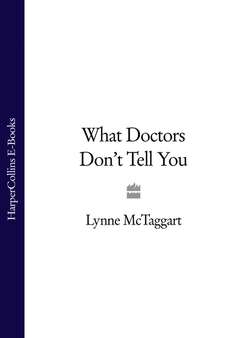Читать книгу What Doctors Don’t Tell You - Lynne McTaggart, Lynne McTaggart - Страница 11
2 Diagnostic Excess
ОглавлениеYour modern-day doctor has at his disposal an array of high-tech gadgetry that allows him to monitor and measure virtually every nook and cranny of your body. He and his fellow doctors are now completely reliant upon these tests to diagnose disease. As patients, we trust tests so implicitly to provide us with a definitive view of our state of health, even to predict when we’re going to get ill at some distant point in the future, that most of our children begin having tests as soon as they’ve been conceived.
At last count, there were more than 1,400 of these, ranging from the simple blood-pressure cuff to the most sophisticated computerized nuclear magnetic imaging devices. Back in the relatively dark ages of 1987, some 19 billion tests were performed on Americans that year alone, which works out to be 80 tests for each man, woman and child.1
Despite the kind of gadgetry that would put NASA to shame, the problem is that the technology doesn’t really work very well. Most tests are grossly unreliable, giving wrong readings a good deal of the time. A false-positive test sets in motion the juggernaut of aggressive treatments at your doctor’s disposal, with all their attendant risks. But the tests themselves can be as risky as some of the most dangerous drugs and surgery, risks that are magnified because so many of these tests are patently unnecessary. In many cases (more so in the United States), doctors protect themselves against potential lawsuits by ordering every test they can. In fact, in the US, many orders for tests are motivated by a doctor’s own self-interest, since so many physicians either own or have substantial shareholdings in the facilities to which they refer their own patients.
Another problem is that, these days, technology has replaced the fine art of diagnostics – of examining a patient’s clinical history and having a good look at his eyes and the state of his tongue. The problem often comes down to trainee doctors, who often order tests under the mistaken notion that their consultant superiors desire such ‘just-in-case’ medicine. But in many cases senior doctors do flog their juniors if they fail to request particular tests, engendering the view that more is better and that massive test-taking is what constitutes good doctoring.2
Tests also make the fundamental error of assuming not only that all people are alike, but that people (and their measurements) always stay the same.
The other problem is that, unless your doctor has a particular feeling for taking apart computers in his spare time, he can get a bit muddled by this gee-whizz technology. One study found that virtually all doctors and nurses don’t know how to work a pulse oximeter, a monitoring system which is vital for monitoring patients recovering from anaesthesia and recording potential life-threatening situations.3 Consequently, they make serious errors in evaluating readings. The medics reported not being ‘particularly worried’ when patients had levels indicating that they were seriously deprived of oxygen and needed immediate attention if they were to live.4
